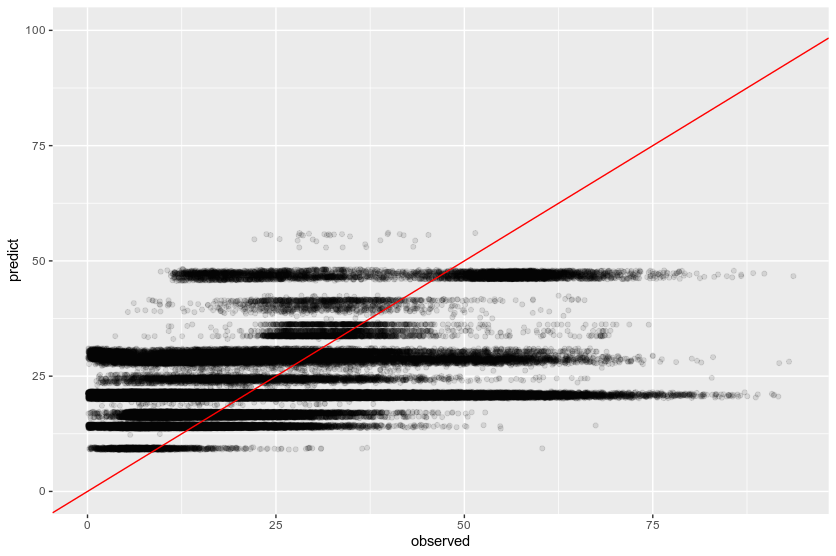I have a dataset of vectors representing movement with various characteristics. Some vectors represents the movement that was stopped by external factor and therefore, observed value for length of such a vector (v_length) is incomplete (marked as incomplete == 1). The data looks like below:
# A tibble: 10 x 9
v_length incomplete v_angle x0 y0 x1 y1 type vap
<dbl> <dbl> <dbl> <dbl> <dbl> <dbl> <dbl> <chr> <dbl>
1 1.70 1 0.869 66.6 0.5 67.7 1.8 A 0
2 1.82 1 -0.165 37.4 65.6 39.2 65.3 B 0
3 2.57 1 0.236 61.3 49.7 58.8 49.1 A 0
4 3.14 1 1.18 57.8 40.5 59 43.4 A 0
5 12.6 0 0.119 52.5 33.7 65 35.2 A 0
6 20.5 0 -0.847 65.3 32.3 78.9 16.9 A 0
7 33.0 0 -0.180 77.5 13.7 45 19.6 A 0
8 14.1 0 -0.780 45 19.6 35 29.5 B 0
9 2.97 0 1.00 35 29.5 33.4 27 B 0
10 6.59 0 0.732 33.4 27 38.3 31.4 A 0
I want to impute a v_length for incomplete observations (incomplete==1). My first idea was to use some parametric survival model (e.g. Weibull). But as I'm not experienced in Survival analysis I have been struggling with a good setup. My first doubt is if it is correct to use v_length as one of the predictors as well? It doesn't make sense at first sight, but the predictions for the model without v_length as one of predictors looks very strange: 
The idea behind inclusion is to help the model know what was the observed vector length, so it can predict a value higher than that. After inclusion of v_length in predictors the output looks like below:
 However, we still have plenty of values lower than actual vector length, while I obviously don't want a model to predict a lower value than observed.
However, we still have plenty of values lower than actual vector length, while I obviously don't want a model to predict a lower value than observed.
So here's my question: is Weibull survival model suitable for this task? What's the correct setup if so? What are the other methods suitable for imputation of right-censored data?
